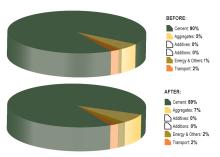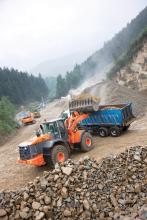PSP is made from the sludge that remains after sewage treatment. (Almost a million tonnes of this sludge is generated in the UK each year.) The sludge is then further heat-treated, making it as harmless as garden soil. In some parts of the country this material is used as an agricultural fertiliser. PSP is already used as an effective fuel in the cement-making process in many countries including Spain, Austria and France. It has also been used for over six years at Lafarge Cement's plant in Cauldon, Staffordshire.
The company has sent out newsletters to 5000 local homes and organised two exhibitions to ensure the local community were aware of its plans and had the opportunity to put forward views and ask questions about the proposed new fuel.
Hope Works manager Ashley Bryan, said, “The use of PSP will help us achieve a reduction in our CO2 emissions and therefore help us meet future targets set by the
Lafarge has submitted its application to the








